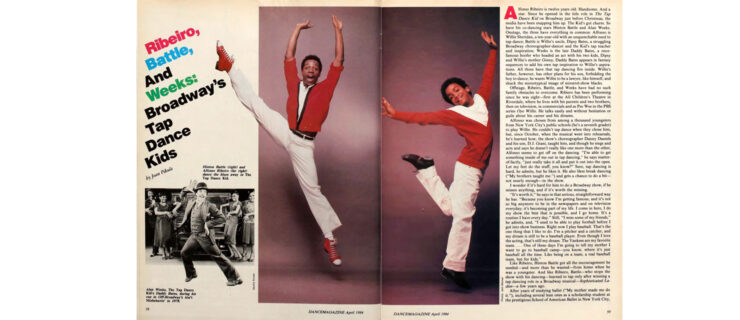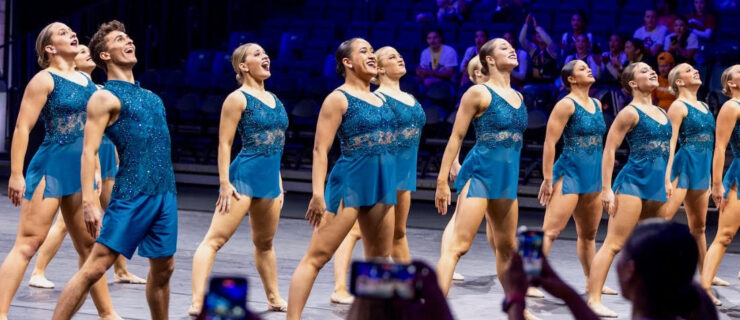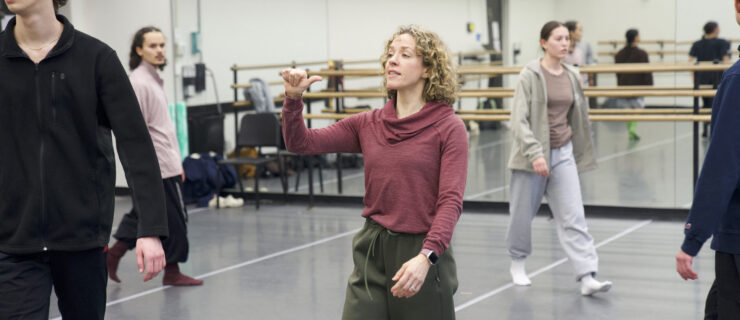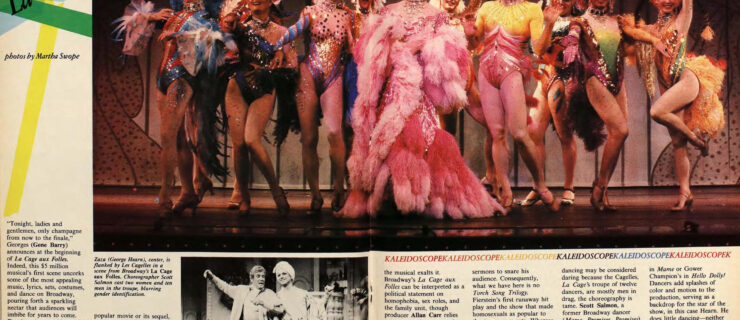Quick Q&A: Diana Vishneva
A ballerina known for her blistering passion, etched lines, and potent sense of drama, Diana Vishneva recently celebrated 15 years of bringing
down houses across the world. The Kirov and American Ballet Theatre principal was feted in a gala evening at the Maryinsky Theater in St. Petersburg in June. Vishneva—ever the daredevil—chose Martha Graham’s
Errand into the Maze, which she performed with Graham company member Ben Schultz, among other works. Photographer and dance writer Nina Alovert interviewed Vishneva (in Russian) about what it was like to be the first dancer to bring the modern master’s work to Russia.
How were you introduced to Martha Graham’s choreography?
About two years ago I was in New York and had the opportunity to attend a Martha Graham concert. When I saw those ballets onstage, I realized how close to my heart they were and wanted very much to perform them. But I wondered whether I could handle it. Such a question always arises when one sees something extraordinary, new, and unfamiliar. I didn’t think it would even be possible. I’ve never even heard of a classical ballerina performing a Graham work. I cannot comprehend how such a legendary choreographer went unnoticed in Russia—that she never came here with her ballets.
How much rehearsal time did you have?
I rehearsed solo for several hours a day, for a total of two months. My schedule is very tight, which is why I had to take some breaks and then return to the work.
What was the most difficult thing about learning the Graham technique?
Such technique assumes a total transformation of the body. When you dance Forsythe or Neumeier or even Preljocaj, your legs are stretched. Their aesthetic and understanding of beauty is close to classical dance. All is completely different in Martha Graham’s choreography. Even balance and gravity—how you feel yourself standing on the floor—are different. How the spine, how the muscles are working, how you feel the stomach are all different. Now that I’ve returned to my regular repertoire, my spine began to hurt, because it wasn’t mobile in Graham’s ballet. You do not use the arch of the upper back, that is completely absent from her technique.
In classical ballet, the body rises upward; the movements have to be light as if one were rising above the stage. With Graham, everything is aimed towards feeling one’s weight. You are constantly working with turned-in hips and that is very difficult.
What kind of help did Graham dancer Miki Orihara give you? Miki explained to me the dramatic challenges Martha Graham set. You look inside and draw emotions from the depth of your heart. The dancing movements are rather restricted, so that your body remains tense. It’s much more difficult to communicate your dramatic emotions, to catch the force of emotion, being motionless. As Miki explained, any movement is like a drop of water falling into the pool that makes a ripple. I worked very hard so that the static positions would be emotionally powerful.
How did the audience respond?
It seemed to me the audience was left with an incredibly powerful impression by the ballet of Martha Graham. Many told me that they wanted to see the work again, because once wasn’t enough to fully grasp it.
How did you choose the pieces for your program? When I am creating my own program, I can choose to dance what I’ve done before or work with contemporary choreographers. Eventually you arrive at modern choreography. Ten or even five years ago, I don’t think that I could’ve danced a Martha Graham ballet. It wasn’t that I was unable to learn the movements, it was simply that I’m not sure I was mature enough to take on such serious works. But in the past few years I have danced ballets of very different contemporary choreographers. This was the only way that I could eventually come to Martha Graham.
What do you look forward to doing in the next 15 years that you’ve haven’t yet had the chance to do?
I haven’t yet worked with choreographers like Jirí Kylián and Mats Ek. I am currently working with Paul Lightfoot, and it’s quite possible that I’ll still get the chance to work with Ek. I have no regrets.
Vishneva in
Errand into the Maze. Photo by Nina Alovert.




